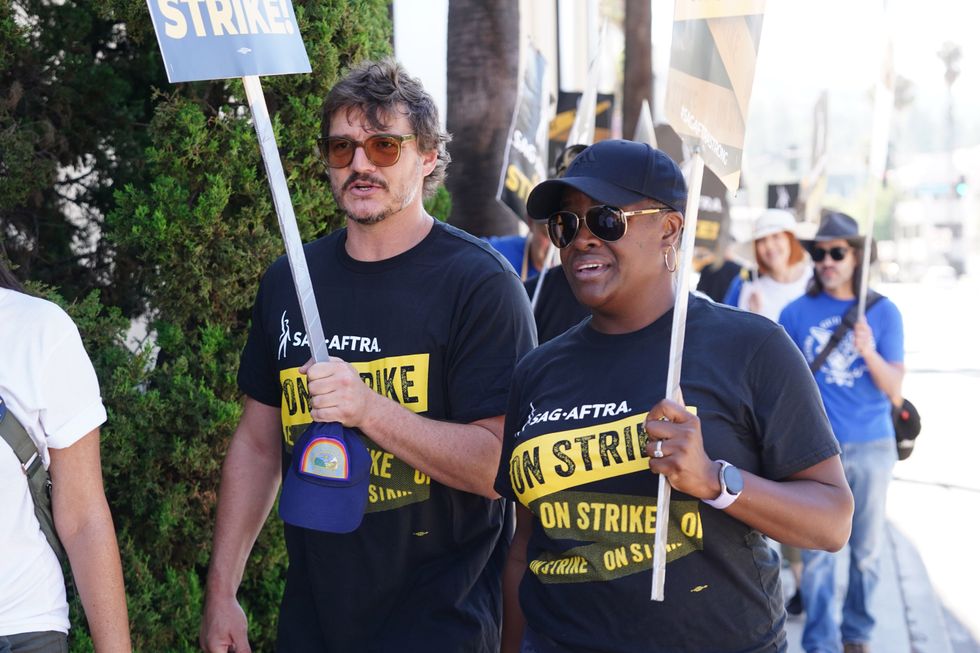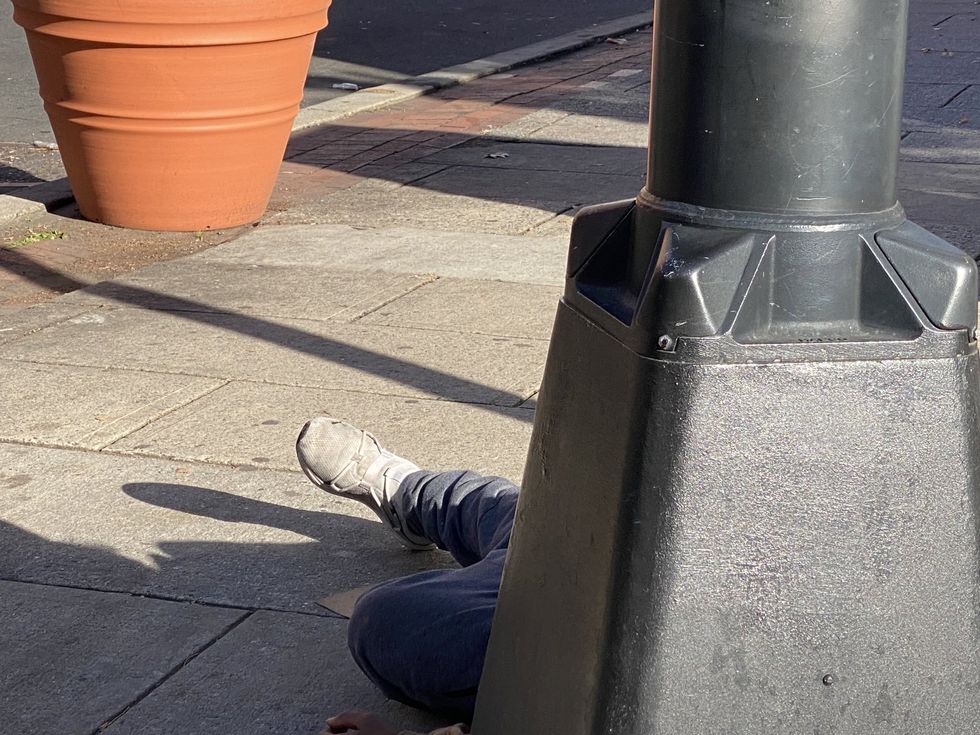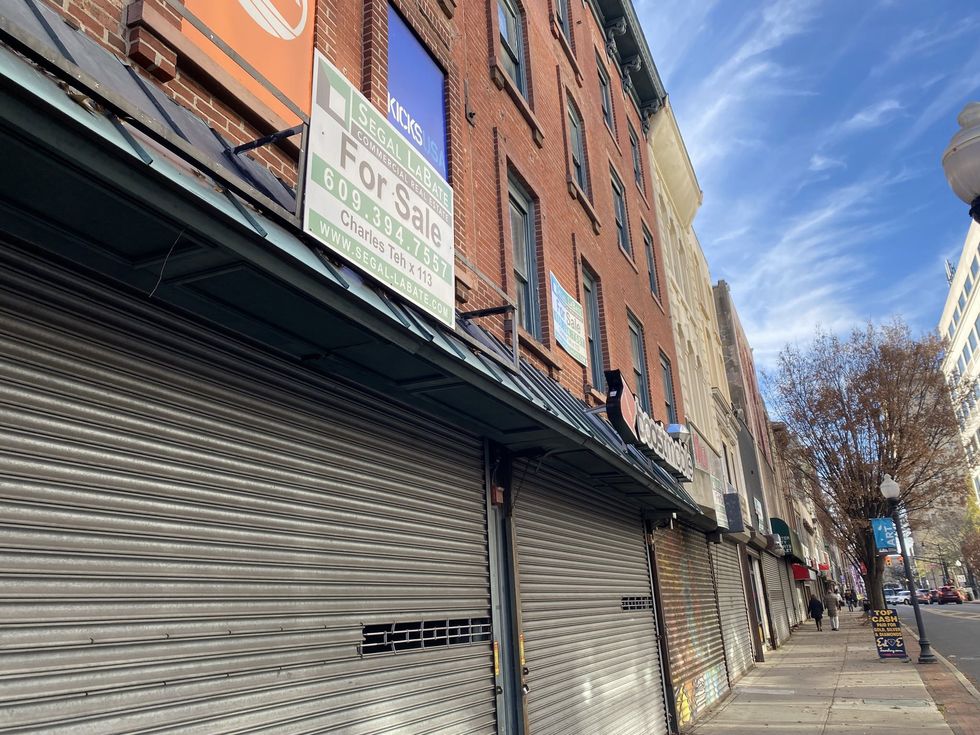This article originally appeared in Insider NJ.
In this summer of Trump indictments, there’s so much that’s being eclipsed by this essential multi-faceted effort to hold him accountable for trying to derail the peaceful democratic transfer of power. This internal myopic fixation on all things Trump is happening as the larger world around us continues to turn whether or not we are engaged in it.
This introspective national dynamic creates dangerous blind spots that can be exploited like they were on Sept. 11 when those hijacked passenger airliners were turned into weapons of mass destruction we did not see coming.
And then for 20 years all we saw was red.
For the 20 years that followed the World Trade Center attack, the United States prosecuted its global war on terrorism that cost trillions and, according to Brown University’s Watson Institute of International & Public Affairs, helped contribute directly to the deaths of as many as 900,000 with another 3.6 million to 3.8 million perishing from the ecological and economic fallout from the open-ended warfare.
ALSO READ: Trump’s PAC-funded Smithsonian portrait remains on track — despite jailhouse mugshot
Shaky nations were further destabilized and tens of millions of refugees left their homes to find sanctuary from a never ending cycle of violence that seemed to actually proliferate terrorism and terrorist groups like ISIS that didn’t exist when we started.
It’s a track record that’s so horrific you can understand why we opt to look away and why a corporate media that’s supported by the military industrial complex avoids it.
Are we up to the heavy lift of holding the Trump junta liable for their treason and calumny while also simultaneously learning the lessons from that global war on terrorism that commandeered the national agenda while Trump was still selling steaks?
Yes, there was beltway corruption before Trump and our national security apparatus had serious problems before Putin’s front man got into the White House.
Now, we have to do deal with both problems in real time. The world turns whether we are paying attention to it or not. That’s something that Rep. Andy Kim (D-NJ), who was first elected to his seat in 2018, knows all too well as a former civilian official with the U.S State Department and Pentagon on the ground in Afghanistan.
“Long story short, I was a sophomore in college when Sept. 11 happened,” Kim told InsiderNJ during a wide-ranging interview. “Being from New Jersey it had a particular resonance and concern, so I decided to give my whole life to service, in particular foreign policy. So, I went and got a doctorate in international relations and joined up with the State Department, worked as a career public servant in foreign policy, and worked at the Pentagon.”
ALSO READ: Feds crack down on ‘rolling coal’ — a troll-tastic pastime of some Trump supporters
Kim continued: “I was based out of Afghanistan in 2011 as a civilian advisor to the military and then worked at the White House National Security Council dealing with counterterrorism and in particular countering the terrorist group ISIS. So, this was something I lived and breathed. I was a career public servant. I worked both under Republicans and Democrats.”
The U.S. "stayed the course" in Afghanistan under four U.S. presidents, two Republican and two Democrats.
Ironically, part of Kim’s job description at the U.S. State Department and the Pentagon when he was stationed in Afghanistan was to brief visiting members of Congress about what was going on inside the beleaguered country. He recalls the failure of U.S. intelligence and the military to downplay the emergence of ISIS and its lethality which created a real disconnect between what was really going on in Afghanistan and what our leaders were being told.
“Well, I think the underestimation of ISIS happened across the board,” Kim told InsiderNJ. “It was a comprehensive failure for our country, not just the military but also in terms of intelligence—in terms of diplomacy. I have seen that with my own eyes and the challenges that come with these huge problems that we were facing especially in Iraq and Afghanistan.”
Kim said it was “a huge challenge” for forward deployed Americans like himself to feel empowered to report back to Congress what they were actually seeing on the ground and not just parrot back what the power structure wanted to project back home.
“That was something we thought about when we were out in Afghanistan,” Kim said. “We are coming across and getting our own sense of what’s happening [on the ground], and we asked ourselves, are people back in D.C. understanding this? Do the people in the Situation Room and in power, on Capitol Hill and elsewhere, understand?”
Kim continued: “And look, members of Congress would come out for a visit. I have done that myself traveling out to Afghanistan in 2019 to try and see with my own eyes. It was really interesting having been somebody who worked in Afghanistan and helped support these Congressional delegations before. Now, returning as a member of Congress I was briefed in the same room at the headquarters in Kabul that I worked in and briefed members of Congress when I was a staffer. So, having seen it from both sides, gives me a greater sense of my own personal belief about what information is needed and how do I try to get as full of a picture as possible because oftentimes, people are quite silent with what they hear.”
The lack of a "speak-up" culture, where flattering superiors by stroking their vanity and validating their false assumptions is the only way to advance up the ranks can have disastrous results.
This month marks the second anniversary of America’s chaotic exit from Afghanistan after 20 years of armed conflict making it this nation’s longest war. The departure was marred by a catastrophic suicide bombing that killed 13 American military personnel and more than 100 Afghans made all the more horrific because we were trying to leave.
In February 2020, the Trump administration signed the Doha Agreement with the Taliban committing to exiting Afghanistan in nine and half months in exchange for the Taliban not permitting anyone to use their country as a base to “threaten the security of the United States and its allies.”
Meanwhile, in the real work conditions on the ground continued to deteriorate as fighting between the Taliban and Afghanistan National Defense forces intensified with the Taliban gaining and holding much of the country.
By 2021, when the U.S. finalized its exit, despite hundreds of billions of dollars invested in Afghanistan’s national military, the national defense forces collapsed immediately. Testifying before Congress a month later U.S. Defense Secretary Lloyd Austin testified “the fact that the Afghan army we and our partners trained simply melted away – in many cases without firing a shot – took us all by surprise.”
Surprised?!
Several years before the Afghan army collapsed so spectacularly, the U.S. Special Inspector General for Afghanistan Reconstruction (SIGAR) revealed that, while the US Forces-Afghanistan reported there were 319,000 Afghan soldiers, the actual number was closer to 120,000. “Persistent reports” of discrepancies in Afghan troop strength “raise questions” over whether or not US taxpayers are actually paying for “ghost soldiers,” SIGAR John Sopko said in a letter to the Pentagon in August of 2016.
Over the arc of its operation SIGAR, a watchdog agency set up by Congress in 2008, the agency helped to secure well over a hundred convictions of government contractors, active-duty and retired US military personnel, while recovering hundreds of millions in criminal fines, restitutions, forfeitures, civil-settlement recoveries, as well as flagging billions more in waste.
In 2016 SIGAR released a "lessons learned" report entitled “Corruption in Conflict: Lessons from the US Experience in Afghanistan.” It evaluated how the US government viewed the risks of corruption going in, how the United States responded to the corruption it encountered, and just how ineffective those responses were.
The SIGAR analysis describes how the pursuit of strategic and military goals all too often trumped concerns about fighting the corruption that U.S. personnel found rampant throughout Afghan society.
According to the report, the United States facilitated “the growth of corruption by injecting tens of billions of dollars into the Afghan economy, using flawed oversight and contracting practices,” while collaborating “with malign power brokers” all in hopes of realizing short-term military goals.
As a consequence, the United States “helped to lay a foundation for continued impunity” for bad actors that ultimately undermined the “rule of law” and actually promoted the kind of corruption that had historically driven the local population away from the central government and “to the Taliban as a way of expressing opposition” to a government they believed to be illegitimate.
The SIGAR report quotes former U.S. Ambassador to Afghanistan Ryan Crocker making the disconcerting observation that “the ultimate failure for our efforts wasn’t an insurgency. It was more the weight of endemic corruption.”
Kim attended a recent Congressional oversight hearings that was convened to examine the circumstances surrounding the U.S. exit from Afghanistan this inconvenient history was not discussed.
One of the subject matter witnesses, retired Col. Seth Krummrich, the former chief of staff for the Special Operations Command that oversaw U.S. operations in Afghanistan, testified described the corrosive impact of “selectively” using intelligence to re-enforce preconceived notions.
“The trap decision makers fall into is selectively choosing the intelligence that supports their favored course of action rather than letting the intelligence shape and inform their decision,” Krummrich told the panel.
After the testimony of subject matter experts, the hearing devolved into Republicans blaming President Joe Biden for the way the way his administration ended America’s 20-year misadventure.
“I agree there were many mistakes made in the 20 years, but the ultimate mistake ended 20 years of blood and treasure with now the Taliban in charge raising their flag over our embassy taking $7 billion of our weapons, leaving the women behind under Sharia law now where they can’t even go outside,” said Rep. Michael McCaul, chair of the Committee on Foreign Affairs.
The hearing had a surreal quality because so many of the Republican House members that were piling on the Biden White House, like Rep. Elise Stefanick (R-NY) voted AFTER the Jan. 6 violent insurrection in the U.S. Capitol not to certify Biden’s legitimate election.
Perhaps had Donald Trump not been so obsessed with staying in power beyond his term in office he could have been paying attention to the disaster brewing in Afghanistan.
Kim told InsiderNJ he was frustrated the U.S. exit had become a “political cudgel with people trying to weaponize the issue for the sake of the 2024 election…. I still truly believe that politics has no place in national security and in the Situation Room. We have to find ways, especially when we are talking about life and death, to have that kind of broader perspective and that humility that comes with it.
“Yes, we spend a lot of time at that hearing talking about the 13 service members who were tragically killed, and yes, I want to make sure that we are honoring their service — that we are learning lessons from that, but we also have to just keep in mind the bigger context," Kim continued. "Over 2,400 Americans died in Afghanistan and each one of their lives was tragically lost and was a sacrifice for this country. So, we need to learn about that.”
To that end, Kim worked with Sen. Tammy Duckworth (D-IL), an Iraqi war veteran who lost her legs in combat while piloting a Blackhawk helicopter, to draft the Afghanistan War Commission Act which was enacted as part of the 2022 National Defense Authorization Act.
The panel will look at U.S. actions just prior to the 9/11 attacks, through the twenty years of the U.S. engagement, right up through the military withdrawal. The Commission has four years from its first meeting to produce a final report with its findings, “conclusions, and recommendations to address any mistakes in the conduct of the war.”
“When we look at the circumstances that lead to the evacuation and all the chaos that was there, we also need to look out how after 20 years of war and trillions of dollars and over 2,400 lives lost, how did we get to the point where the Taliban was still so strong and capable across the entire country,” Kim said. “How was it that we got to a point we had to negotiate with them one on one, without the Afghan government in the room which was one of the questions I was pointing to during the hearing — just to point out that there were so many points along the way that lead to this lapse in August when the evacuation was happening that we need to look at because it created that snowball.”
InsiderNJ asked Kim how the U.S. foreign policy and military command structure could turn a blind eye to the dashboard with blinking hazard lights provided by SIGAR for well over a decade on the war in Afghanistan.
“Exactly, that really gets to the issues that underpins so much of what we have seen and what I saw in Iraq as well,” Kim said. “Did the Iraqi security forces have the will to fight? Did the Afghanistan National Security forces have the will to fight? Was that a credible operation? We spent so much time trying to build up these forces and we’ve learned the lessons of how much that has blown up in our faces. We have to reevaluate.”
Kim continued: “We have to really look at that carefully and draw upon those lessons for future potential challenges. And we see that right now with the fighting in Ukraine and how do we try to approach that learning lessons from the past.”
Even now, the three-term congressman is concerned that as the U.S. shifts its geo-political focus to China and “arming up” Taiwan it hasn’t fully grasped the lessons we need to learn from the last 20 years post 9/11.
“How are we going to learn our lessons from this all?” Kim asks with a sense of urgency. “It feels like in Congress we are not doing that. Instead, we are making things worse in my opinion by politicizing these issues and that’s something that I found deeply alarming coming to Congress from a place of having been a non-partisan national security official for the country.”
Kim says Congress has to think “more strategically and holistically about these massive problems and not to try to oversimplify them for partisan purposes.”
Of course, we have to finish litigating who won the 2020 election first.



 A vacant home in Neptune, N.J. Photo: Bob Hennelly
A vacant home in Neptune, N.J. Photo: Bob Hennelly Pedro Pascal walks the picket line at the SAG-AFTRA strike on Sept. 26, 2023 ,at Warner Brothers Studios in Burbank, Calif. (Photo by Hollywood To You/Star Max/GC Images)
Pedro Pascal walks the picket line at the SAG-AFTRA strike on Sept. 26, 2023 ,at Warner Brothers Studios in Burbank, Calif. (Photo by Hollywood To You/Star Max/GC Images) A man shoots up on the streets of Trenton, N.J. Photo: Bob Hennelly
A man shoots up on the streets of Trenton, N.J. Photo: Bob Hennelly Shuttered storefronts in Trenton, N.J. Photo: Bob Hennelly
Shuttered storefronts in Trenton, N.J. Photo: Bob Hennelly